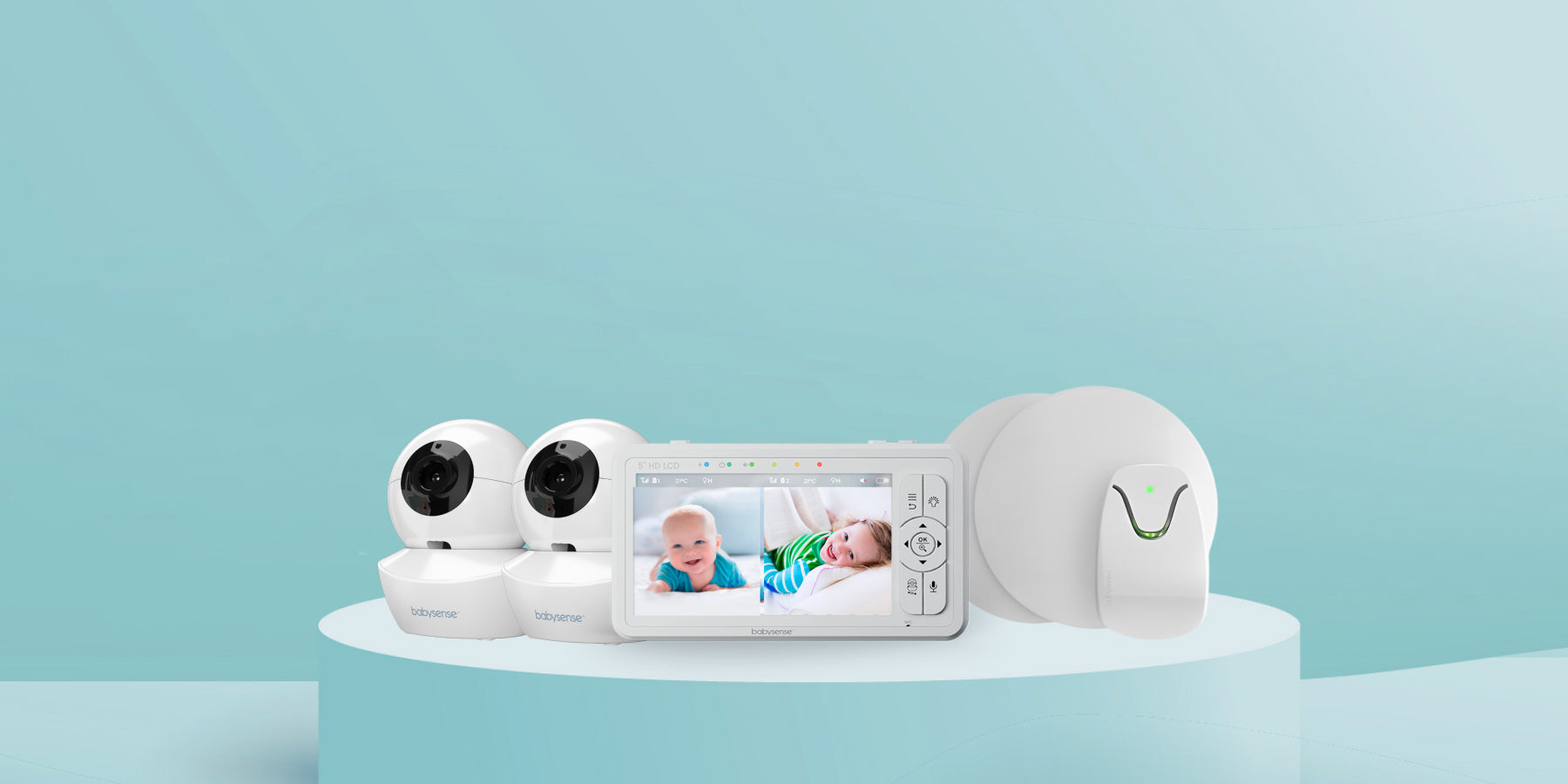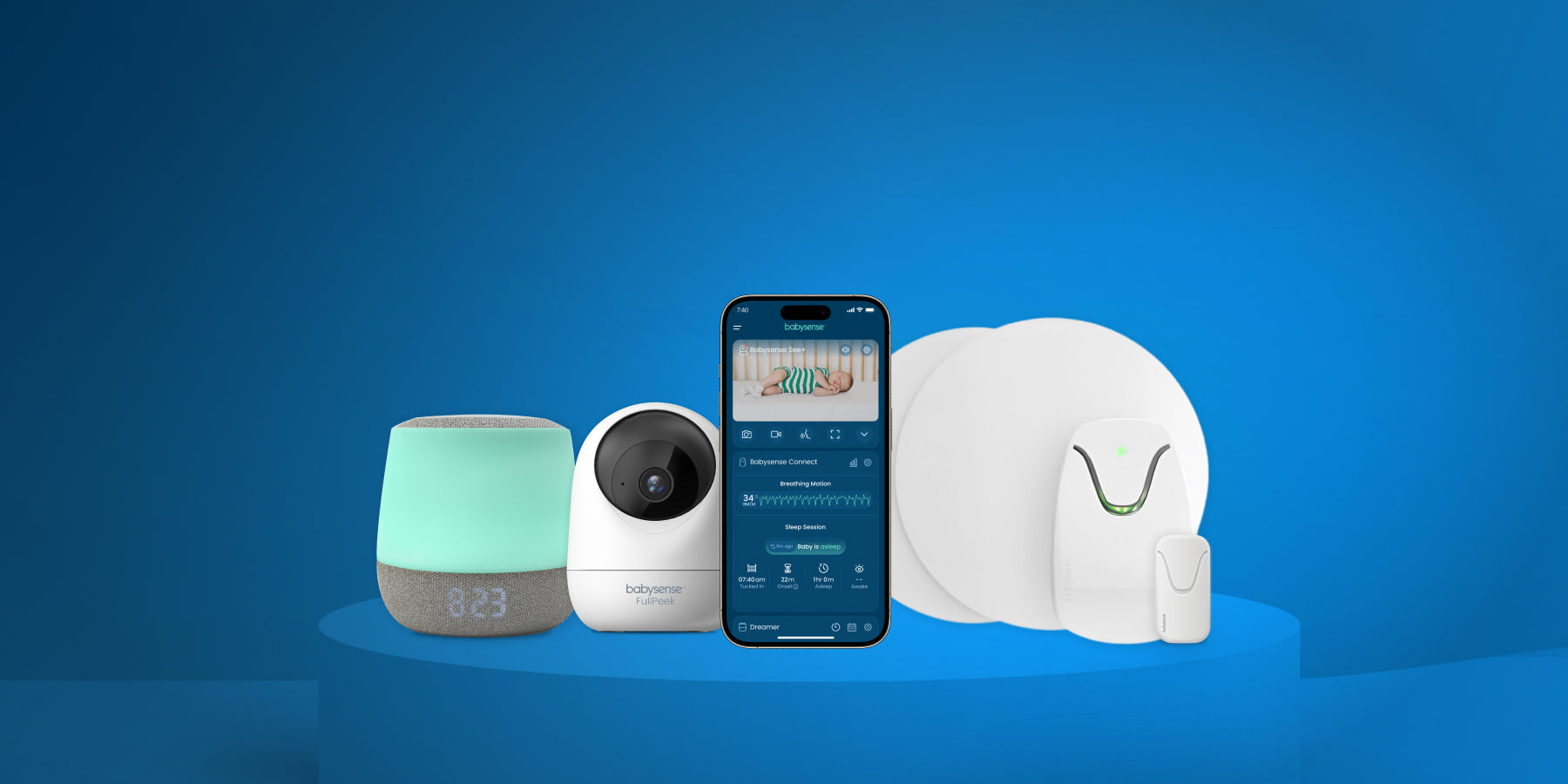There are few things more heart-melting than the sight of a sleeping baby, especially when they have a serene smile stretched across their chubby little face, something you’ll often see when watching your little one on your video baby monitor. Just what that smile could mean, though, isn’t entirely clear.
If you’re like many parents, you’ve probably wondered what it is that gets your little one grinning after they drift off to dreamland. It’s a good question, one that we’ve yet to come up with a definitive answer for.
So much of babies’ psychology remains a mystery that all the experts can do is make educated guesses based on our existing knowledge of the adult body and mind.
That said, researchers have some pretty compelling theories for this undeniably adorable behavior. In this article, we’ll review several of the most popular explanations, ranging from intriguing to humorous.
The Science of Sleep
To get an idea of why babies smile in their sleep, it can be helpful to understand a bit about what goes on in their brains after they slip into unconsciousness.
More specifically, it’s worth examining the different sleep cycles and how they affect various processes in the body.
NREM vs. REM Sleep
Most people know that sleep takes place in cycles. But what are these cycles, exactly, and what purpose do they serve?
Though sleep is generally thought of as being one continuous activity (or lack thereof), there are actually two different types of sleep: non-rapid eye movement (NREM) sleep and rapid eye movement (REM) sleep.
Both take place in a single slumber session, and both have a significant impact on vital physiological functions.
NREM Sleep
Non-rapid eye movement sleep occurs in three distinct stages. Scientists refer to these stages as N1, N2, and N3.
N1
The first stage of NREM sleep occurs right after you first doze off. At this stage, you’re technically asleep, but only superficially. If you’ve ever been jolted awake by a loud noise or sudden commotion while napping, you were most likely in stage N1 sleep at the time.
Stage N1 sleep is quite short-lived, typically lasting only one to five minutes. It is perhaps best understood as a transitional interval between wakefulness and true sleep.
N2
Stage N2 sleep picks up where stage N1 leaves off—with the body winding down as it prepares to enter deep sleep. Here, your muscles relax, your heartbeat slows down, your breathing takes on a fixed, regular rhythm, and your brain activity begins to decrease.
This is the longest NREM sleep stage, lasting around ten to 25 minutes during the first cycle and 30 to 60 minutes on subsequent cycles. All told, you spend about half of your nightly repose in stage N2 sleep.
N3
You’re fully asleep by the time you get to stage N3 (hence this stage often simply being called “deep sleep”). Everything from your muscles to your pulse relaxes and slows down even more. What’s more, your brain effectively shifts over to autopilot and begins producing low-frequency delta waves, prompting crucial recovery processes to kick in.
Restorative stage N3 NREM sleep is exceedingly important, as it’s responsible for most of the body’s healing and growth. It can be challenging to rouse someone who’s in stage N3 sleep. If you do, they’ll likely be groggy and disoriented as a result of the interruption.
REM Sleep
Following the three successive stages of NREM sleep comes rapid eye movement, or REM, sleep. While there’s some debate over whether REM sleep is “deeper” than stage N3 NREM sleep, there’s no debating its significance in maintaining overall health.
During REM sleep, the eyes dart to and fro beneath their lids as brain activity revs back up and the sleeper is subjected to vivid dreams.
Most scientists agree that dreaming is probably the brain’s way of processing images, memories, and emotions accumulated throughout the day, though no one knows for sure precisely why it happens.
Your core temperature and breathing also become somewhat irregular while you’re in REM sleep. In fact, it’s not common for people in this stage of rest to experience bouts of apnea, where breathing stops completely for brief periods.
Putting It All Together
If you were to map out the progression of the four stages of sleep as they occur in your body, it would look like this:
N1 ⟶ N2 ⟶ N3 ⟶ REM ⟶ N1 ⟶ N2 ⟶ N3 ⟶ REM ⟶ N1 ⟶ N2 ⟶ N3 ⟶ REM
And so on.
Your body doesn’t jump through these stages like the second hand of a clock. It passes seamlessly from one into the next like the minute hand, then starts the cycle over and continues in this fashion until you finally wake up feeling rested and refreshed.
Babies need a lot more sleep than adults since they have so much developing to do. On average, babies sleep a total of about 14-17 hours a day, only waking up to feed every few hours. As such, they go through roughly twice the number of sleep cycles that you do every time you put them down.
But there’s another big difference between your sleep cycle and your baby’s. It’s been shown that children younger than three months split their time almost evenly between REM (or “active”) sleep and NREM (or “non-active”) sleep. Their sleep stage progression looks more like this:
REM ⟶ NREM ⟶ REM ⟶ NREM ⟶ REM ⟶ NREM ⟶ REM ⟶ NREM ⟶ REM ⟶ NREM
They go on alternating between REM and NREM sleep like this the whole time they’re at rest.
So, Why Do Babies Smile in Their Sleep?
The study of sleep and its effects is endlessly fascinating. Still, it doesn’t explain why babies so often break into smiles as they snooze. For that, we must turn to the experts, who have proposed several compelling possibilities.
Reflex
The first and most widely accepted explanation for sleep-smiling in newborns is that it’s simply a reflex.
During REM sleep, the body performs all sorts of involuntary actions, from jerking and twitching to whimpering and grasping.
Some researchers believe that smiling may be one such movement. They’ve termed this “endogenous smiling,” meaning it arises of itself rather than happening in response to goading from parents or other kinds of outside stimulation.
The theory goes that endogenous smiling could essentially serve as practice for future social situations. That makes a lot of sense when you consider how central smiling is to human interaction.
Dreaming
The jury is still out concerning whether or not babies dream. Regardless, many pediatric neurologists are convinced that babies can access dreamlike states in which they process what limited memories and sensory impressions they have, much like their grownup counterparts.
For example, suppose an infant receives abundant physical affection, eats something yummy, or feels cozy and secure in their crib. In that case, they might express their joy or contentment later on through actions such as smiling.
Assuming this theory is true, it could account for why babies can often be seen smirking after they’ve been out for a few hours.
Emotional Feedback
It could also be the case that your baby’s smile is an instinctive display of love and affection towards you, especially once she starts to get a little older.
Let’s be honest—this is the scenario that most parents are secretly pulling for. Luckily, there’s plenty of evidence to suggest that that’s indeed what’s happening.
Smiling is an unmistakable form of emotional feedback that could strengthen the bond between an infant and its mother or father.
One way to test this hypothesis is to gently stroke your baby’s hair or tickle her tummy while she sleeps. If she starts smiling, it could be because she subconsciously recognizes that you’re there watching over her.
Flatulence
It might sound silly, but some scientists have speculated that farting may be a factor in babies' tendency to smile. Yes, really.
As you’re no doubt aware, the act of passing gas can be very relieving. Therefore, it’s thought that smiling might be a baby’s way of showing pleasure following the release of pent-up gas. All talk of propriety aside, these little toots signify that your infant’s digestive system is working properly.
This theory combines elements of the reflex and emotional feedback schools of thought. It isn’t until the child learns certain social cues later in life that their reaction to flatulence changes from satisfaction to embarrassment (or amusement, in the case of boys).
Conclusion
Science may never solve the riddle of why babies smile in their sleep. Even so, all of the leading interpretations point to causes that indicate normal bodily function, healthy development, and happy thoughts.
In other words, whatever the reason is, you can be sure that it’s something worth smiling about.





